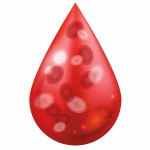U.S. researchers have decoded the structure of the HIV genome, which could help develop new antiretroviral therapy, Agence France-Presse reports.
Like viruses that cause the flu and hepatitis C, HIV carries its genetic information in single-strand RNA, as opposed to double-strand DNA found in all living organisms and some other viruses. While earlier studies have successfully mapped smaller regions of the HIV genome, scientists have now been able to model much larger areas. These findings, published in Nature, will help researchers learn more about how the RNA genome determines HIV’s life cycle.
“We are beginning to understand tricks the genome uses to help the virus escape detection by the human host,” said lead researcher Kevin Weeks, PhD, at the University of North Carolina at Chapel Hill.
In a commentary on the study, also published in Nature, Hashim Al-Hashimi, a researcher at the University of Michigan at Ann Arbor, called the study a “considerable achievement.”
“Structural biologists can now use this genomic map to judiciously zoom in on pieces of the HIV-1 genome and determine architectural and functional principles at the atomic level,” he said.
Advertisement
Advertisement
Advertisement






1 Comment
1 Comment